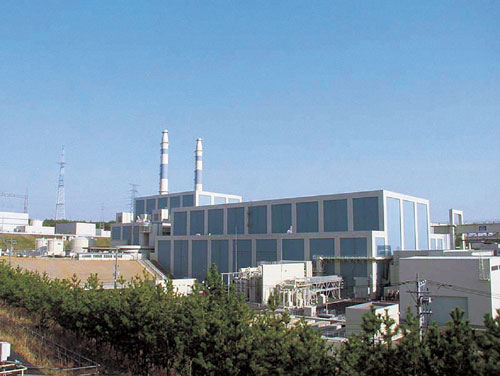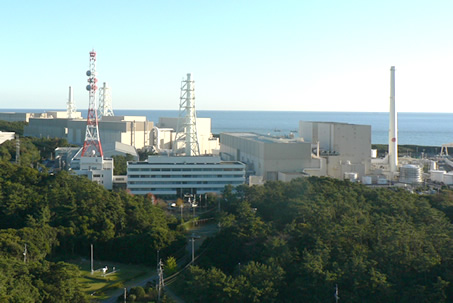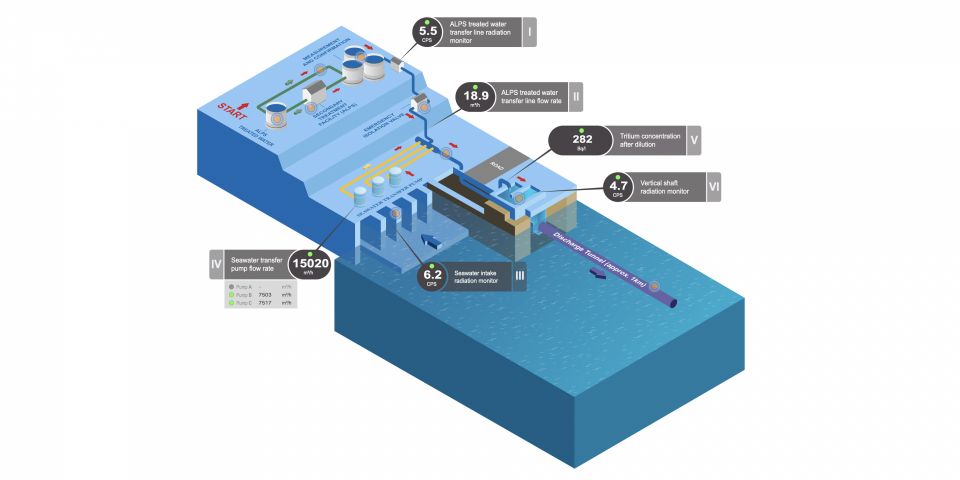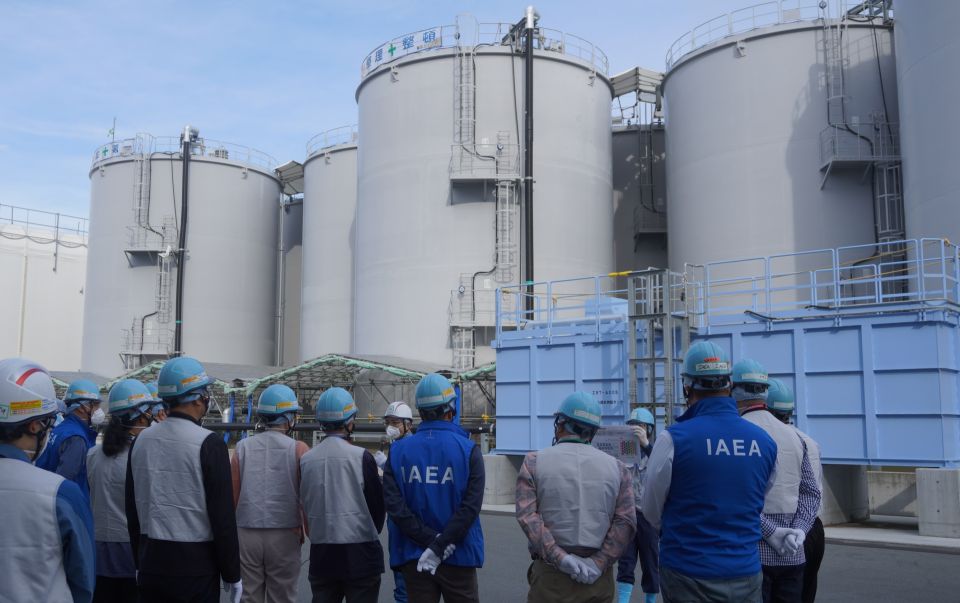The Final Entrant - Last Nuclear Utility in Japan Applies for Restart

Shika NPP Unit 2. Courtesy Hokuriku Electric Power Co.
Yesterday, the saga of nuclear energy in post-Fukushima Japan reached an important milestone as the final utility that owns nuclear power plants in that country applied to the regulator for restart, in an event that snuck under the radar of most news venues.
Hokuriku Electric Power Company yesterday submitted its application to have Shika Nuclear Power Plant Unit 2 examined by the Nuclear Regulation Authority under the revised guidelines for nuclear plant safety. Hokuriku owns only one nuclear power station, Shika, which has two units; Unit 1 is a BWR-5, while Unit 2 is an ABWR that went into commercial operation in March 2006. This application for Unit 2 means a number of things; it marks the end of the final holdout, if you will, by a nuclear utility; it shows that all utilities with nuclear plants will attempt to restart at least one unit; and it answers the question once and for all whether the Japanese utilities unanimously want to continue to include nuclear in their fuel mixes for the future.
Hokuriku has stated that work at the site (which mirrors heavy site work underway at most nuclear plants in post-Fukushima Japan) is not yet complete and that it does not have a specific restart date for this nuclear plant.
Shika Unit 2 had some press before this; this plant, along with Chubu Electric Power Company's Hamaoka Unit 5, made some notoriety in 2006 when both were shut down for some time due to turbine generator problems. Hamaoka-5 shut down first in June 2006, actually on a turbine trip due to high vibration; this was quickly discovered to be a result of broken blades in the "B" or center (of three) of the low pressure turbines on its Hitachi TC6F-52 turbine generator. Because Shika Unit 2 had the same model turbine generator, it was ordered shut down in July 2006 for inspection; this revealed similar, if not as extensive, damage.
Hitachi paid for repairs to the Hamaoka and Shika turbine generators; the Hamaoka unit was back on-line in February 2007, eight months after the event. Shika Unit 2 however was saddled with a reduced power rating, and was also delayed in its restart while NISA (the former nuclear regulator) dealt with systemic problems at the site. Shika Unit 2 finally restarted in June 2008, rated at 1108 MWe instead of its original designed 1358 MWe. Hokuriku detailed plans to modify the turbine in 2010 and return the plant to its original full rating, but the only increase allowed was to 1206 MWe, which is where the official plant rating lies at the moment according to Nuclear Regulation Authority records. Hitachi has since modified its designs to eliminate the problems that originally caused these failures, which have not recurred in any other Hitachi turbine generators.
The restart applications, as they came
It is now appropriate to briefly detail the nuclear plant restart applications in a neat bunch as we find ourselves at a convenient historical point from which to look back.
The initial applications for restart actually came in a rush; on July 8, 2013, four utilities applied for restart examination for no fewer than 10 reactors at five sites. Quite interestingly, all of these were Mitsubishi pressurized water reactors); their ages varied, with commercial operation starting dates ranging from 1984 to 2009, in two, three, and four loop configurations. These were Hokkaido Electric Power's Tomari NPP Units 1, 2 and 3; Kansai Electric Power's Ohi NPP Units 3 and 4 and Takahama NPP Units 3 and 4; Shikoku Electric Power's Ikata Unit 3; and Kyushu Electric Power's Sendai Units 1 and 2.
Just four days later on July 12, 2013, Kyushu Electric Power also applied for its Genkai NPP Units 3 and 4. These are also Mitsubishi PWR plants.
As had long been expected, on September 27, 2013, Tokyo Electric Power applied to restart two units at its massive Kashiwazaki-Kariwa NPP-and these, Units 6 and 7, were the first boiling water reactors of any kind to apply to restart. These units are Hitachi-GE-Toshiba ABWRs, and are the newest TEPCO nuclear units.
Chugoku Electric Power applied to restart Shimane NPP Unit 2, a Hitachi BWR-5, on December 25, 2013. Two days later on December 27th, Tohoku Electric Power applied to restart Onagawa NPP Unit 2-another BWR-5, but of Toshiba heritage.
The first application of 2014 was February 14, when Chubu Electric Power applied to restart Hamaoka Unit 4, a Toshiba-Hitachi BWR-5.
Japan Atomic Power Company (JAPC) applied to restart its Tokai Daini NPP, a GE BWR-5, on May 20, 2014. With a commercial operation date in November 1978, this is by far the oldest reactor applied for restart in Japan; the next closest date is Sendai Unit 1, commercially operational in 1984.
It was June before another application was made; on the 10th, Tohoku Electric Power applied to restart Higashidori 1, a BWR-5 of rather recent vintage, having entered commercial service in 2005.
And, of course, as we now know Shika Unit 2 applied yesterday (August 12, 2014,) marking only the third ABWR to apply for restart.
In total, the restart applications include 12 Mitsubishi PWRs, three ABWRs, and a total of five BWR-5 reactors of various heritage, making 20 reactors overall.

Hamaoka NPP: Courtesy Chubu Electric Power Co.
Kashiwazaki-Kariwa (TEPCO, two units applied), Tomari (Hokkaido, three units), Shika (Hokuriku, one unit applied), Shimane (Chugoku, one unit applied), Ikata (Shikoku, one unit applied), Takahama and Oi (both Kansai, four units total), and Genkai and Sendai (both Kyushu, four units applied) are on the West coast of Japan or on coasts facing west, making a total of 16 of the 20 units that are not subjected to future tsunami from the same fault that triggered the Great East Japan/Tohoku Earthquake and Tsunami. The majority of these 16 units (12) are the Mitsubishi PWR units; three more of these 16 units are the ABWRs applied for restart.
The results of these restart applications are, of course, expected to be an exceedingly mixed bag. Anti-nuclear court rulings, mistrust among prefectural governments, environmental groups, and anti-nuclear activists are already having a major impact on the processes to restart the nuclear plants. It is certain that we will look back on this historical point as a mere footnote; the hard work of both preparing the plants for future events and regaining the public trust all lies mainly ahead, and it is likely to take many years to bottle those results as conveniently as we bottle the applications here.
For more information:
Japanese Utilities Lining Up to Restart Reactors
Preparing to Restart: Tsunami Safety Measures at Japanese Nuclear Power Plants
Japan's Nuclear Restarts: Abe says "Will See To It;" Courts Differ; Plants Prepare
________________________
 Will Davis is the Communications Director for the N/S Savannah Association, Inc. where he also serves as historian, newsletter editor and member of the board of directors. Davis has recently been engaged by the Global America Business Institute as a consultant. He is also a consultant to, and writer for, the American Nuclear Society; an active ANS member, he is serving on the ANS Communications Committee 2013-2016. In addition, he is a contributing author for Fuel Cycle Week, and writes his own popular blog Atomic Power Review. Davis is a former US Navy reactor operator, qualified on S8G and S5W plants.
Will Davis is the Communications Director for the N/S Savannah Association, Inc. where he also serves as historian, newsletter editor and member of the board of directors. Davis has recently been engaged by the Global America Business Institute as a consultant. He is also a consultant to, and writer for, the American Nuclear Society; an active ANS member, he is serving on the ANS Communications Committee 2013-2016. In addition, he is a contributing author for Fuel Cycle Week, and writes his own popular blog Atomic Power Review. Davis is a former US Navy reactor operator, qualified on S8G and S5W plants.





.jpg)